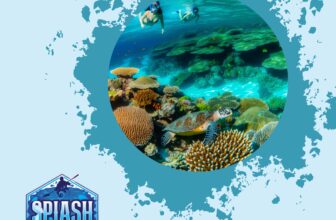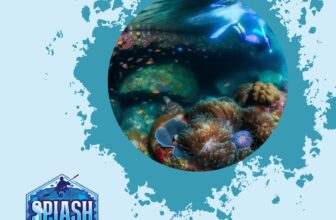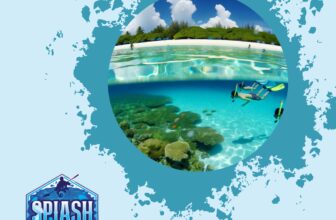
Welcome to the intriguing world of night wreck underwater photography! Capturing the haunting beauty of submerged structures after the sun sets is an adventure that offers unique challenges and rewards. Ready to dive in? Let's get started!
Introduction
Night wreck underwater photography is the art of capturing images of submerged structures in the dark, revealing an eerie, mystical beauty that daylight cannot offer. So, why choose to shoot wrecks at night? Night diving brings out the dramatic contrasts and obscure details in wrecks, illuminating them with an ethereal glow from your artificial lights. The adventure of discovering these hidden depths adds an element of excitement and intrigue to your diving experience.
When it comes to the equipment needed, a reliable underwater camera with a sturdy housing is a must. Strobes or video lights are essential to pierce through the darkness and bring your subjects into focus. You'll also need a good quality wetsuit or drysuit to keep warm, a dive computer to monitor your status, and a compass to navigate the wreck. Skills such as proficient buoyancy control, understanding of light dynamics underwater, and mastery of your camera's settings are crucial to successfully photographing wrecks at night.
Essential Gear for Night Wreck Underwater Photography
Venturing into the depths of the ocean to capture the enigmatic allure of underwater wrecks at night demands not just skill, but the right gear. Here's a rundown of essential equipment to ensure you're well-prepared:
Underwater Camera Tips
Choosing the right camera and housing can make or break your underwater adventure. Look for an underwater camera that is durable, has good low-light performance, and allows for manual settings adjustments. A reliable housing that can withstand depth pressures and has easy access to camera controls is crucial. Also, consider a dome port if you plan to take wide-angle shots, as it helps in preserving image quality underwater.
Lighting Setup
Underwater lighting is as important as the camera itself. Night dives require robust lighting solutions:
- Strobe Lights: These are great for freezing motion and bringing out the colors in your subject matter. Strobe lights can eliminate the bluish tint of underwater pictures by restoring natural colors.
- Video Lights: Continuous lighting from video lights helps in framing shots and focusing. They are perfect for illuminating entire scenes and creating a consistent lighting environment.
Effectively using these lights includes positioning them at various angles to avoid backscatter (those pesky particles in the water that reflect light) and adjusting their intensity based on how far you are from the subject.
Additional Equipment
Apart from your camera and lights, other pieces of gear are equally important:
- Dive Computer: Tracks your depth and time, ensuring you stay within safe limits.
- Wetsuit or Drysuit: Depending on the water temperature, staying warm is essential to focus on your photography without discomfort.
- Compass: Essential for navigating wreck sites, especially since different parts can look similar.
- Safety Gear: Always carry a cutting tool, surface marker buoy, and whistle or signaling device. Safety first!
With the right gear in place, you set yourself up for a successful and enjoyable night wreck photography dive. Happy shooting, and remember: preparation is key.
Preparing for the Dive
Research and Planning
Before you plunge into the depths of night-time wreck photography, do your homework. Begin by scouting the wreck site during the daytime to familiarize yourself with the layout and notable features. Identify key spots you want to capture and mark them if possible. Pay attention to entry and exit points, potential hazards, and areas where marine life is abundant. A thorough daytime recon will make your nighttime dive smoother and safer.
Safety First
The allure of photographing underwater wrecks at night should never eclipse your commitment to safety. Always dive with a buddy who’s experienced in night dives and underwater photography. Discuss your dive plan in detail, including depth, duration, and emergency procedures. Use clear, pre-agreed hand signals since communication is essential underwater, especially at night. Let someone on land know your dive plan and expected return time.
Gear Check
Ensuring your equipment is dependable can be the difference between a thrilling night dive and a dangerous one. Before heading underwater, check that all your gear is functioning correctly. Verify that your camera housing is properly sealed to prevent water ingress. Ensure your strobes and lights are charged, and pack extra batteries just in case. Assemble your dive computer, wetsuit or drysuit, compass, and any required safety gear, like a surface marker buoy (SMB). Double-check everything before you descend; it's better to overprepare than to confront issues underwater.
By carefully planning and ensuring safety and equipment checks, you set yourself up for a successful night dive, allowing you to focus on capturing the eerie beauty of underwater wrecks.
Diving and Positioning
Entry and Descent
Starting your night wreck dive with a controlled entry is crucial. Slip into the water gently to avoid startling any nearby marine life and to keep the water as clear as possible. A calm, methodical descent helps you equalize pressure effectively and maintains your sense of orientation in the inky blackness. Using a descent line can be particularly helpful, providing a reference point that guides your way down to the wreck.
Finding Your Subject
Once you reach the wreck, the real adventure begins. This is where your daytime scouting pays off. Familiarity with the wreck's layout allows you to navigate directly to its most compelling features, such as the ship's bow, helm, or any interesting artifacts around the site. Employ your dive light to spotlight potential photographic subjects and to help you see the delicate details that make each wreck unique.
Stability and Buoyancy
Maintaining stability and proper buoyancy control is essential. Buoyancy issues can cloud visibility, as an errant fin kick can stir up sediment, spoiling a pristine photographic scene. Focus on slow, deliberate movements. Practice hovering and try to stay slightly negatively buoyant, allowing you to stabilize yourself gently with your fingertips if needed without causing damage to the wreck or disturbing marine life. A stable platform ensures you get clear, sharp images and helps maintain the integrity of the underwater environment.
Capturing the Perfect Shot
When it comes to capturing the perfect shot of an underwater wreck at night, the exhilaration of seeing the hauntingly beautiful wreck through your viewfinder is irreplaceable. Here are some key elements to help you achieve the best results:
Composition Tips
First and foremost, composition is king. Frame your shot as you would on land, keeping the rule of thirds in mind. Position the most striking features of the wreck slightly off-center for a balanced yet dynamic shot. Use lines such as railings, ropes, and beams to lead the viewer’s eye through the frame. This is essential, as underwater scenes can be chaotic, and directing focus will set great photos apart from cluttered ones. If you’re interested in a deep dive into composition, check out this guide.
Use of Lighting
Night wreck photography demands adept use of artificial lights. Your primary tools here are strobes and video lights. Strobes are fantastic for illuminating large areas with bright, powerful bursts, whereas video lights provide continuous lighting, which helps with focusing and framing. Position your lights at different angles to avoid harsh shadows and backscatter (those annoying specks caused by particles in the water). Experiment with side lighting to bring out textures and details in the wreck’s surfaces.
Camera Settings
Your camera settings will make or break your shots in the dark, murky depths. Start with a lower ISO (200-400) to minimize noise, but be prepared to bump it up if needed. A relatively slow shutter speed (1/30 to 1/100) will allow for ample light capture, but ensure you have a steady hand or a tripod to avoid motion blur. Aperture settings should be moderately open (f/5.6 – f/8) to balance depth of field and light intake.
Focusing in Low Light
Focusing can be tricky in low-light conditions, especially with small viewfinders. Enable the focus assist light if your camera has one, but be mindful of scaring off marine life. Consider switching to manual focus; once set, you can maintain a consistent distance from your subject. Pre-focusing on a particular distance can also save time and ensure clarity. Additionally, a well-placed video light can do wonders in helping autofocus systems lock onto the subject.
By mastering these elements—composition, lighting, camera settings, and focusing—you'll be well on your way to capturing the eerie splendor of underwater wrecks at night. Remember, practice makes perfect, so keep diving and shooting, and soon you'll be a pro at it!
Incorporating Marine Life
Taking captivating photos of marine life that inhabit wrecks adds an extra layer of intrigue to your night underwater photography. Here are some tips to help you incorporate sea creatures into your shots effectively.
Marine Life Photography
-
Patience is Key
- Marine life behaves unpredictably, so patience is crucial. Spend some time observing and getting a feel for the movements and rhythms of the creatures around the wreck.
-
Respect Their Space
- Maintain a respectful distance to avoid scaring them off or causing stress. The more comfortable they are, the more natural your photos will look.
-
Lighting Matters
- Use your lights wisely to highlight the marine life without startling them. Red filters can be especially useful as many marine creatures are less sensitive to red light.
- Consider the Background
- Wrecks often provide dramatic backdrops. Frame your shots to include interesting parts of the wreck alongside your marine subjects for a more compelling image.
Behavior Patterns
-
Study Species Behavior
- Each species has its own patterns and habits. Some fish are more active at certain times of the night, while others may be attracted to or repelled by light. Understanding these behaviors can help you anticipate where and when to find them.
-
Feeding Times
- Know the feeding times of different species. Nighttime often brings out more activity as some marine creatures hunt under the cover of darkness.
-
Movement Prediction
- Learn to predict the movement of marine life. For example, many fish swim in predictable paths around an area. Being ready and understanding these patterns will make it easier to capture dynamic shots.
Final Thoughts
By blending knowledge of marine life behavior with respectful and skillful photography techniques, your images will not only capture the eerie beauty of wrecks but also the vibrant life that inhabits them. Whether it’s a langoustine peeking out of a crevice or a school of fish darting through the wreck, these shots will breathe life into your underwater photography portfolio.
Troubleshooting Common Issues
Underwater wreck photography at night is exhilarating, but it comes with its fair share of challenges. Let's tackle some common issues you might encounter and how to overcome them.
Handling Low Visibility
Murky water can turn your dive into a visual guessing game. Here’s how to clear things up:
- Use Powerful Lights: Strong lights cut through the haze, but be cautious of backscatter, which is light reflecting off suspended particles. Position your lights at a slight angle to minimize this effect.
- Stay Close: The closer you are to your subject, the less water there is for light to pass through, reducing the impact of low visibility.
- Optimize Settings: Set your camera with a higher ISO and a faster shutter speed to capture more detail despite the gloom.
Avoiding Overexposure
Lighting balance underwater is delicate. Here’s how to prevent your photos from getting washed out:
- Diffuse Your Light: Use diffusers on your strobes or video lights to spread out the light evenly, avoiding harsh hot spots.
- Manual Control: Shooting in manual mode allows you to adjust the exposure settings precisely. Keep an eye on your histograms to ensure balanced exposure.
- Bracket Your Shots: Take multiple shots at different exposures to ensure you capture the best possible image.
Battery Life and Storage
You don’t want to run out of juice or space halfway through your dive. Here's how to keep things charged and ready:
- Check and Double-Check: Ensure all batteries are fully charged before the dive. Carry extra batteries in a waterproof container if your camera allows for mid-dive replacement.
- Efficient Power Use: Turn off unnecessary functions or dim your camera screen to save battery. Use sleep mode when not actively shooting.
- Adequate Storage: High-resolution photos and videos chew through memory cards. Bring extra high-capacity cards and change them out as needed to avoid missing a shot.
By tackling these common issues confidently, you’ll be well on your way to capturing stunning underwater wreck photos at night.
Post-Dive Procedures
Checking Your Shots
After surfacing, take some time to review your photos while they're fresh in your mind. Check the LCD screen to ensure you've captured the shots you intended, paying particular attention to focus, exposure, and composition. If your camera supports it, use the zoom feature to closely inspect critical details.
Post-Processing Tips
Editing can significantly enhance your underwater wreck photos. Start with basic adjustments like correcting white balance, enhancing contrast, and sharpening. Underwater images often have a blue or green cast; use color correction tools to bring out the natural tones. Tools like Adobe Lightroom or Photoshop are excellent for these tweaks. Remember, subtle edits often yield the most natural-looking results.
Sharing Your Work
Once you're satisfied with your edits, it's time to share your masterpieces. High-quality images can make a significant impact on platforms like Instagram, Flickr, or dedicated underwater photography forums. Consider tagging locations and using appropriate hashtags to reach a broader audience. Also, engaging with online communities not only showcases your work but can also provide valuable feedback and opportunities for growth.
Safety Reminders and Ethical Considerations
When it comes to night wreck underwater photography, safety and ethics should reign supreme. Let's break down two crucial aspects that will help keep you and the marine environment safe.
Environmental Impact
Capturing the mystique of underwater wrecks at night is thrilling, but it’s essential to minimize your footprint. Follow these straightforward practices to ensure you're treading lightly:
-
No Touch, No Take: It's tempting to touch or take items from the wreck, but resist the urge. These structures are homes to marine life and touching can disrupt or damage fragile ecosystems.
-
Control Your Buoyancy: Maintaining proper buoyancy is critical. Avoid kicking up silt or disturbing the seabed, which can cloud visibility and harm delicate habitats.
-
Use Eco-Friendly Gear: Opt for reef-safe sunscreen and environmentally friendly dive gear. Even small choices can help protect underwater ecosystems.
Ethical Wildlife Interaction
Interacting with marine life needs to be done with respect and mindfulness. Here are some guidelines to follow:
-
Observe, Don’t Disturb: Always observe wildlife from a distance. Avoid chasing, touching, or feeding marine animals as this can stress them and alter their natural behaviors.
-
Avoid Flash Photography: Using intense flash can startle and stress marine creatures. Instead, use Continuous Lighting (CL) systems with adjustable output to softly illuminate your subjects without causing harm.
-
Respect Breeding and Feeding Grounds: Identify and steer clear of breeding and feeding grounds. Your presence can have unintended consequences on these critical activities.
Final Thoughts
By keeping these safety and ethical guidelines in mind, you'll not only capture stunning images but also ensure the preservation of the underwater world for future generations. Happy diving and remember, the ocean's beauty is best respected and protected.
Beginner's Guide and Further Resources
Beginner's Guide to Diving Photography
Dipping your toes into the realm of underwater photography can feel overwhelming at first, but it becomes more manageable with some foundational knowledge. Start with these key tips:
-
Master Basic Diving Skills: Before introducing a camera into your dive, ensure you're comfortable with buoyancy control and navigation. Good diving skills help stabilize your shots and protect the underwater environment from accidental damage.
-
Start Simple: Invest in a reliable, user-friendly underwater camera. Many beginners opt for compact cameras with underwater housing, which are more affordable and easier to handle compared to high-end DSLRs or mirrorless setups.
-
Understand Your Camera: Familiarize yourself with your camera's settings both above and below water. Practice on land as well as in shallow water to understand how different settings affect your shots.
-
Lighting is Crucial: Water absorbs light quickly, especially reds and yellows. Use an external strobe or video light to bring colors back to life and reduce backscatter, which are the annoying "snow" of particles that can ruin a shot.
-
Practice Composition: Focus on the basics of composition like the rule of thirds, leading lines, and framing. Underwater, use natural features like coral or parts of a wreck to create interesting compositions.
Community and Continued Learning
Once you've mastered the basics, it’s vital to stay connected and keep learning:
-
Join Online Forums: Platforms like Wetpixel and ScubaBoard are great places to ask questions, share your photos, and get feedback from seasoned underwater photographers.
-
Take a Course: Many dive shops offer underwater photography courses tailored to different skill levels. Taking a specialized course can accelerate your learning and provide hands-on experience.
-
Follow Influential Photographers: Learn by example. Follow established underwater photographers on social media or through their blogs. Watch their process, understand their techniques, and adapt their tips to your style.
-
Read Up: Numerous books and e-guides focus on underwater photography. “The Underwater Photographer” by Martin Edge is a comprehensive guide that many recommend.
-
Engage in Local Communities: Join local dive clubs and participate in underwater photography contests and workshops. Engaging with local communities can provide personalized insights and offer opportunities for collaborative learning.
By building a strong foundation and continuously seeking more knowledge, you will improve your underwater photography skills. Remember, patience and practice are essential, and above all, enjoy the magical underwater world you're capturing!
Conclusion
Night wreck underwater photography is not just about capturing images; it’s about the thrill of exploring an eerie, silent world few people ever get to see. The challenges of poor visibility, low light, and the complexity of underwater navigation can be daunting, but with the right preparation and equipment, the rewards are immense. Those successful shots of ghostly shipwrecks shrouded in shadows are worth every bit of the effort.
As you embark on this unique form of photography, remember to practice regularly, be patient with the learning curve, and most importantly, always prioritize safety. Each dive is an opportunity to hone your skills and get closer to mastering this specialized craft. Respect the marine environment and enjoy the process of discovering the mysteries that lie beneath the surface.
Happy diving, and may your underwater adventures be both safe and spectacular!







